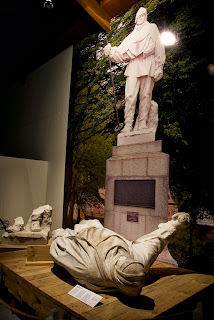The Start of the Antarctic Science Season

On 11 February 1913 England woke to the Daily Mail headline ‘Death of Captain Scott. Lost with four comrades. The Pole reached. Disaster on the return.’ Just a day before, the press had reported that the British Antarctic expedition leader was back in New Zealand after succeeding in his goal to reach the South Geographic Pole; the Royal Geographical Society had even prepared a telegram congratulating him on his success. The palpable sense of anticipation and excitement now turned to despondence. A few days later a hastily organised memorial service was held in St Paul’s Cathedral, London. The numbers attending were staggering, exceeding those at the service for the 1500 lives lost on the Titanic in the same year. ‘The presence of the king,’ The Times declared, ‘conveyed a symbolism without which any ceremony expressive of national sentiment would have been inadequate.’ The Empire grieved and in response, clock towers were raised, streets renamed and monuments erected. Statues c...



